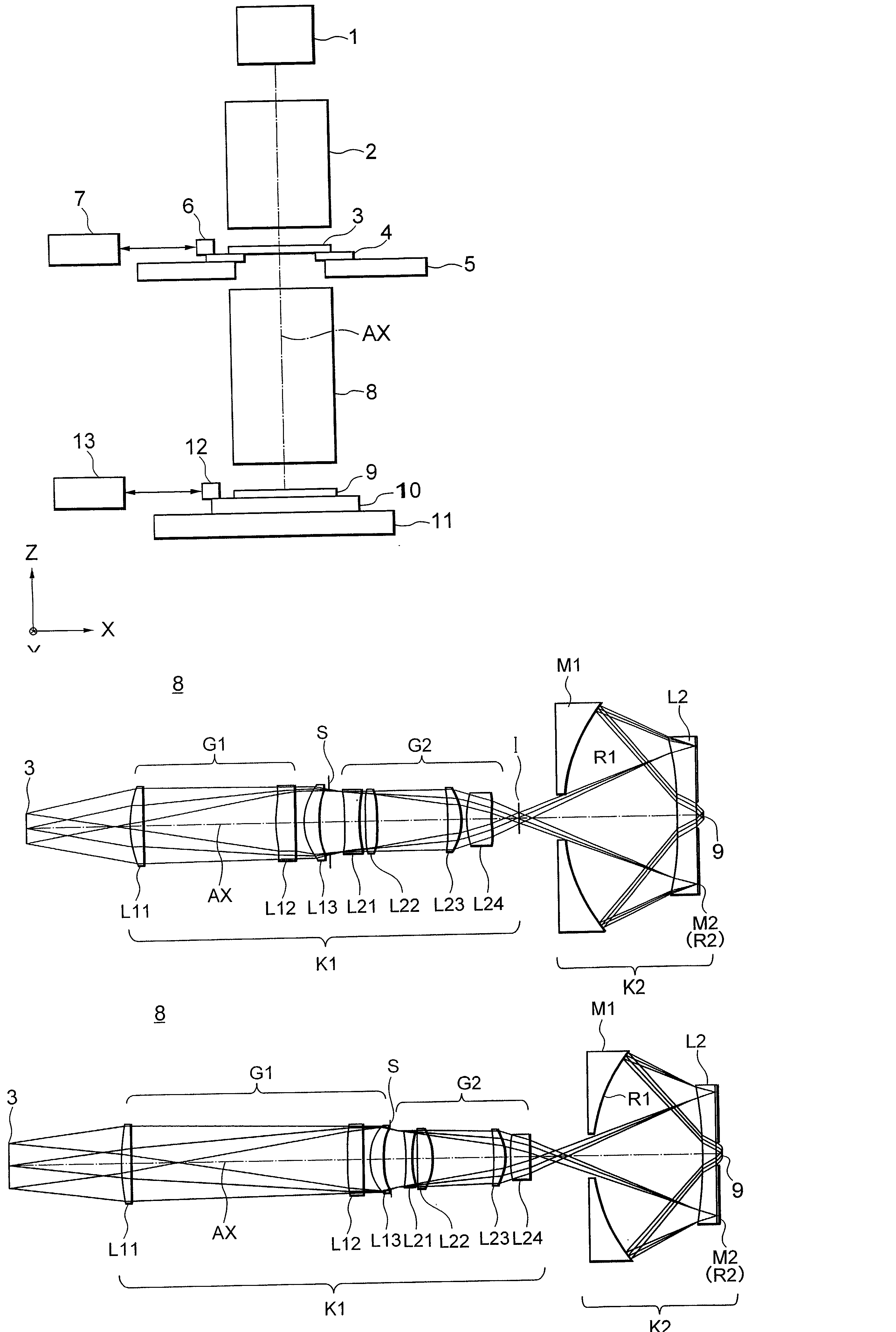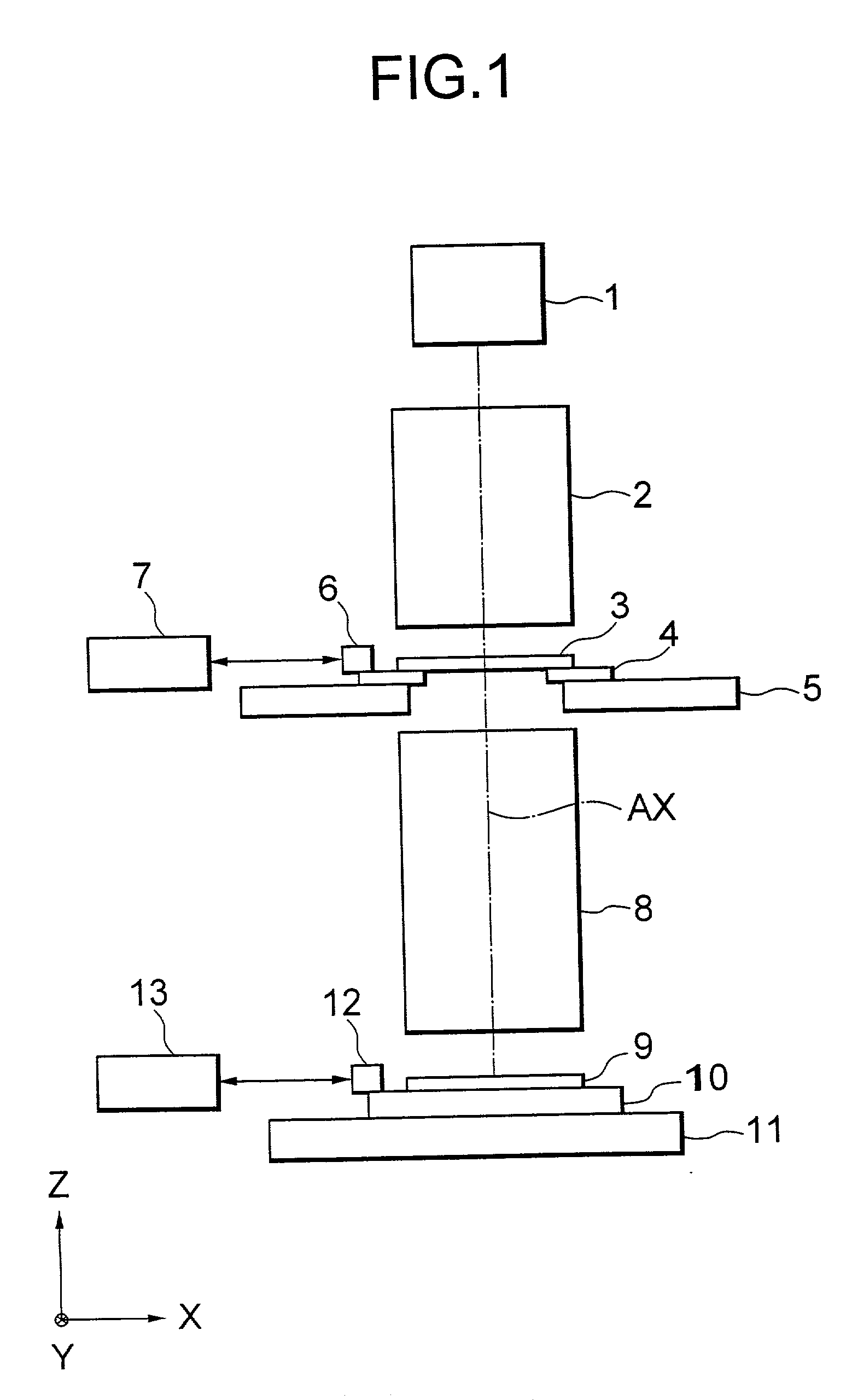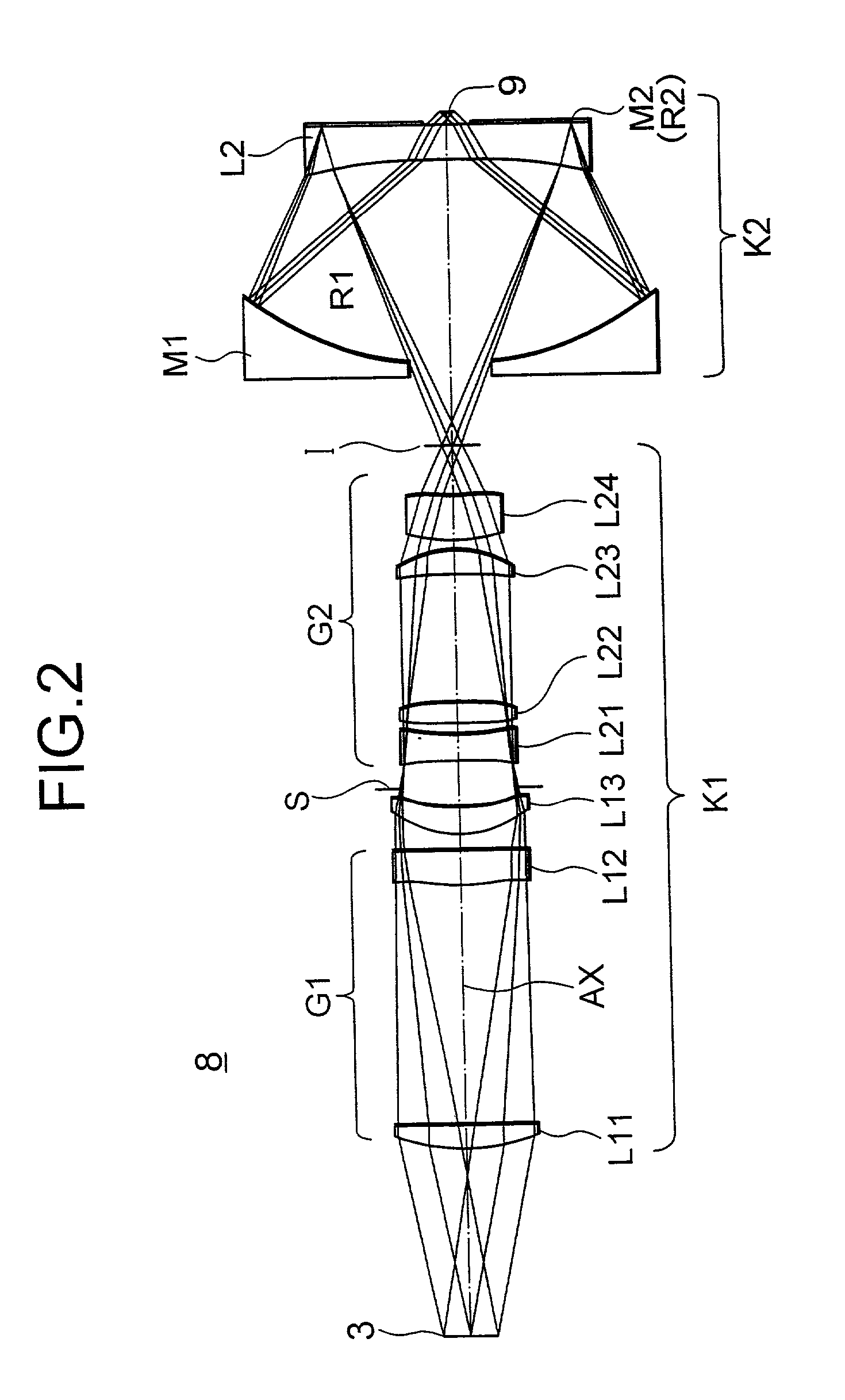Catadioptric imaging system and a projection exposure apparatus provided with said imaging system
a technology of imaging system and exposure apparatus, which is applied in the direction of microlithography exposure apparatus, photomechanical treatment, instruments, etc., can solve the problems of increasing light absorption, chromatic aberration becomes impossible, and the practicability of glass materials is limited
- Summary
- Abstract
- Description
- Claims
- Application Information
AI Technical Summary
Benefits of technology
Problems solved by technology
Method used
Image
Examples
second example
[0172] FIG. 4 is a view for showing a lens structure of a catadioptric imaging system (projection optical system) according to a second example. In the second example, like in the first example, the present invention is applied to a projection optical system in which the aberrations including the chromatic aberration are corrected for the exposure light having the wavelength width of 157.6 nm.+-.10 pm.
[0173] In the catadioptric imaging system of FIG. 4, the first lens group G1 is comprised of a double convex lens L11 having the surface on the mask side formed to be aspherical, a positive meniscus lens L12 having the aspherical convex surface facing the mask side, and a positive meniscus lens 13 having the aspherical concave surface facing the wafer side, in this order from the mask side.
[0174] Also, the second lens group G2 is comprised of a double concave lens L21 having the surface on the mask side formed to be aspherical, a double convex lens L22 having the surface on the mask si...
third example
[0183] FIG. 6 is a view for showing a lens structure of a catadioptric imaging system (projection optical system) according to a third example. In the third example, unlike in the first and second examples, the present invention is applied to a projection optical system in which the aberrations including the chromatic aberration are corrected for the exposure light having the wavelength width of 157.6 nm.+-.2 pm.
[0184] In the catadioptric imaging system of FIG. 6, the first lens group G1 is comprised of a double convex lens L11 having the surface on the mask side formed to be aspherical, a double convex lens L12 having the surface on the mask side formed to be aspherical, and a positive meniscus lens 13 having the aspherical concave surface facing the wafer side, in this order from the mask side.
[0185] Also, the second lens group G2 is comprised of a double concave lens L21 having the surface on the mask side formed to be aspherical, a double convex lens L22 having the surface on th...
fourth example
[0194] FIG. 8 is a view for showing a lens structure of a catadioptric imaging system (projection optical system) according to a fourth example. In the fourth example, like in the third example, the present invention is applied to a projection optical system in which the aberrations including the chromatic aberration are corrected for the exposure light having the wavelength width of 157.6 nm.+-.2 pm.
[0195] In the catadioptric imaging system of FIG. 8, the first lens group G1 is comprised of a positive meniscus lens L11 having the aspherical concave surface facing the mask side, a positive meniscus lens L12 having the aspherical convex surface facing the mask side, a negative meniscus lens L13 having the aspherical concave surface facing the mask side, and a positive meniscus lens L14 having the aspherical convex surface facing the mask side, in this order from the mask side.
[0196] Also, the second lens group G2 is comprised of a negative meniscus lens L21 having the aspherical conc...
PUM
| Property | Measurement | Unit |
|---|---|---|
| diameter | aaaaa | aaaaa |
| wavelength | aaaaa | aaaaa |
| wavelength | aaaaa | aaaaa |
Abstract
Description
Claims
Application Information
 Login to View More
Login to View More - R&D
- Intellectual Property
- Life Sciences
- Materials
- Tech Scout
- Unparalleled Data Quality
- Higher Quality Content
- 60% Fewer Hallucinations
Browse by: Latest US Patents, China's latest patents, Technical Efficacy Thesaurus, Application Domain, Technology Topic, Popular Technical Reports.
© 2025 PatSnap. All rights reserved.Legal|Privacy policy|Modern Slavery Act Transparency Statement|Sitemap|About US| Contact US: help@patsnap.com



